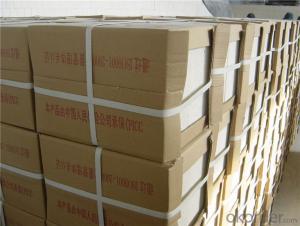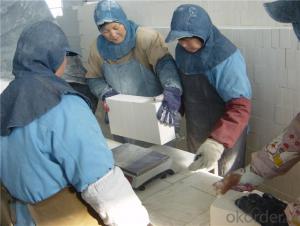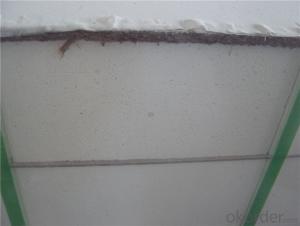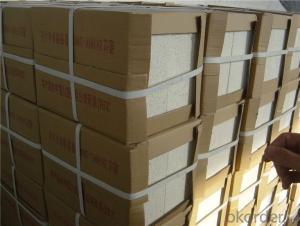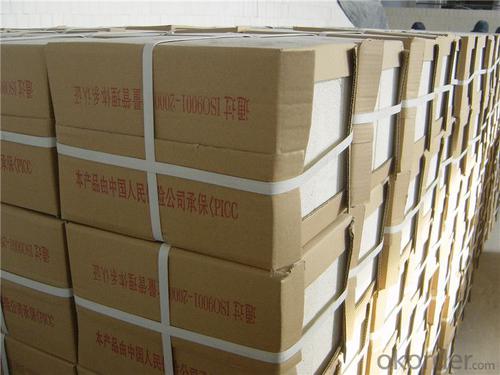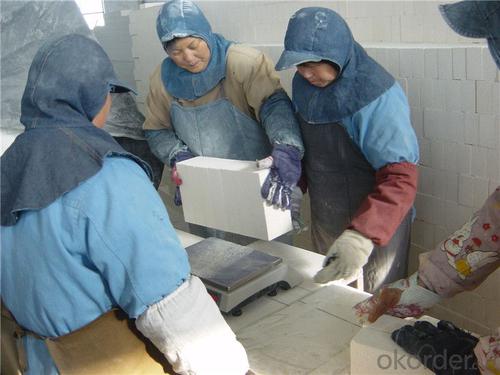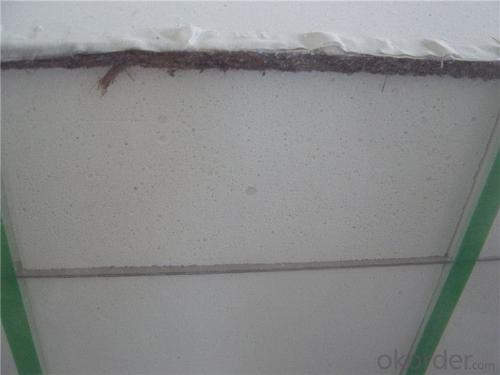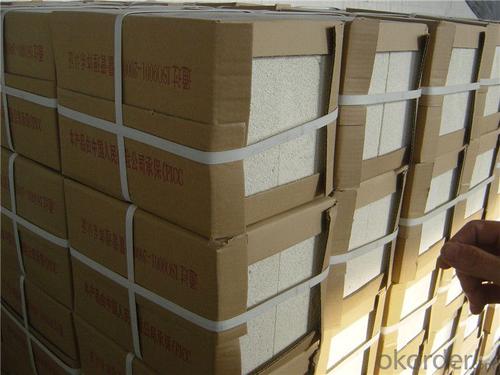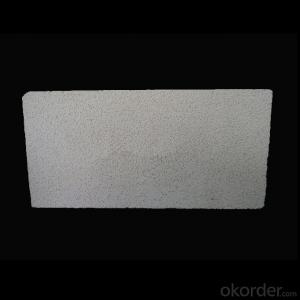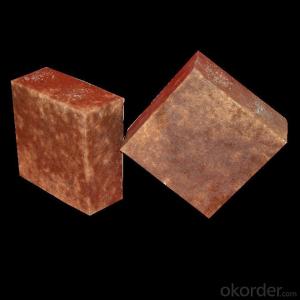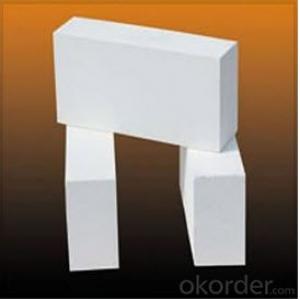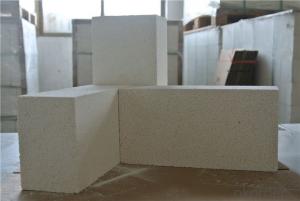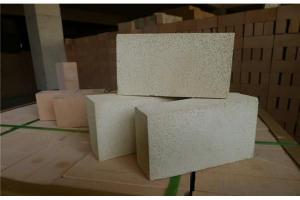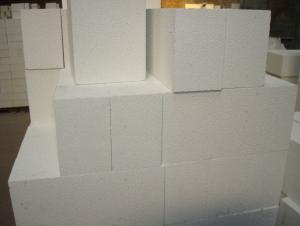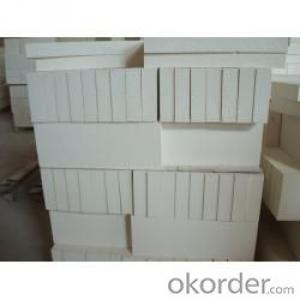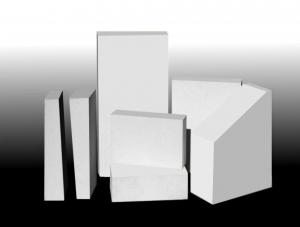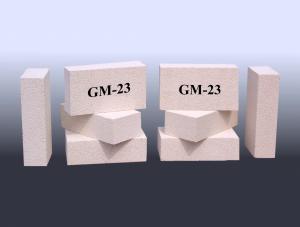Lightweight Fire Clay Insulation Brick As A Building Material
- Loading Port:
- Shanghai
- Payment Terms:
- TT OR LC
- Min Order Qty:
- 1 m.t.
- Supply Capability:
- 1000 m.t./month
OKorder Service Pledge
OKorder Financial Service
You Might Also Like
Thermal Insulation Fire Clay Brick
Refractory brick is a block of refractory ceramic material used in lining furnaces, kilns, fireboxes, and fireplaces.
We provide high quality Refractory Fire Bricks that are used on wide range in the various industries like Cement, Glass and Steel. Refractory Fire Bricks are provided as per the quantity and specifications required by the customers. We provide an extensive range of Refractory Fire Bricks at reasonable prices that depend upon the quantity ordered.
Application
Insulating Fire Brick are used for the lining of converter, alternating current arc furnace, direct Current arc furnace and the ladle slag line, etc.
Company Advantage
(1)Long Insulating Fire Brick manufacture history: 25 years manufacturer
(2)Advanced equipment
(3)Diversification of production standards: ISO ANSI FEPA JIS ASTM
(4)Flexible payment: T/T L/C D/P D/A
(5)Professional marketing team and after-sale service
Insulating Fire Brick main feature:
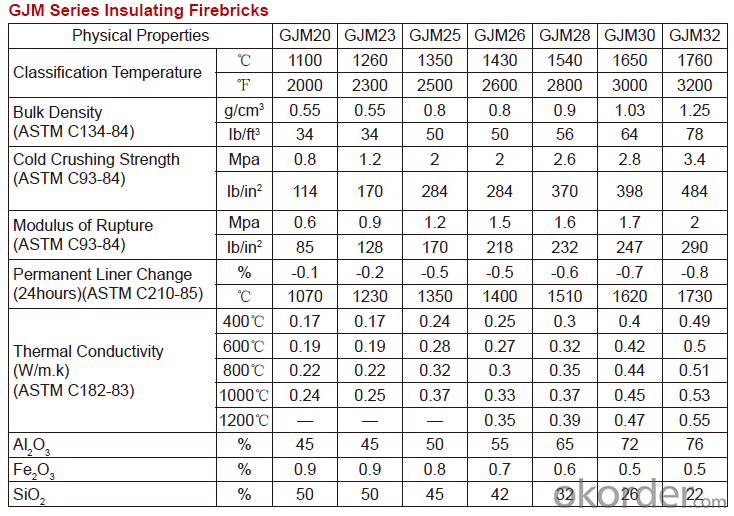
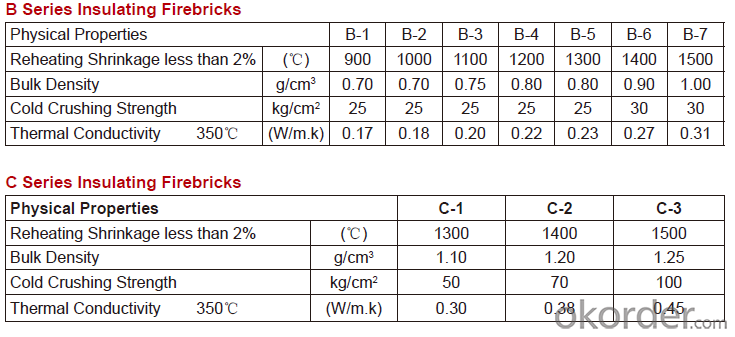
Equipment
1 unit of Ceramic Abrasive (SG Abrasive) pilot production line
2 units of Compact grain Abrasive pilot production lines
1 unit of high-end coated abrasives (abrasive cloth) production line
2 units of Boron Carbide production lines
3 large flexible crushing and sieving lines for grit production lines
6 units of 5000KVA-10000KVA dumping type electric arc furnaces for Brown Fused Alumina fusion
Q1 What’s the transport method?
A1 FCL delivery goods with wooden pallet or wooden case by sea; If LCL delivery, must with wooden case; Sometimes need open top, flat rack or bulk cargo.
Q2 What’s the required payment term?
A2 Generally 30% TT as the prepayment, 70% TT before delivery. If need, 100% Irrevocable Letter of Credit or negotiation.
Q3 Which country are our products exported to?
A3 Apart from entire Chinese market, the US, Russia, Japan, Korea, Australia and some Southeast Asian Nations.
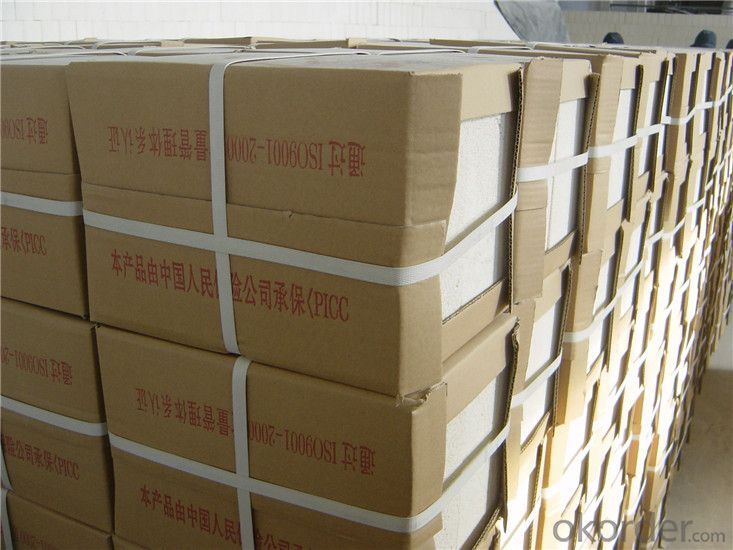

- Q: Can insulating fire bricks be cut to custom sizes?
- Yes, insulating fire bricks can be cut to custom sizes. These bricks are made from lightweight materials such as ceramic fibers, which make them easier to shape and cut according to specific requirements.
- Q: Can insulating fire bricks be used in the construction of heat storage units?
- Yes, insulating fire bricks can be used in the construction of heat storage units. Insulating fire bricks are designed to withstand high temperatures and have excellent thermal insulation properties. They are commonly used in applications where heat retention is important, such as in furnaces, kilns, and heat storage units. These bricks have low thermal conductivity, which means they can effectively retain and store heat for longer periods of time. This makes them ideal for heat storage units where the goal is to capture and store heat energy for later use. In addition, insulating fire bricks are lightweight and easy to work with, making them a practical choice for construction projects. Overall, insulating fire bricks are a suitable and reliable option for incorporating into heat storage unit construction.
- Q: Are insulating fire bricks resistant to UV radiation?
- Insulating fire bricks are not typically designed to be resistant to UV radiation. UV radiation from the sun can cause degradation and discoloration of many materials, including fire bricks. Therefore, it is recommended to protect insulating fire bricks from direct exposure to UV radiation, such as by using a protective coating or covering when they are used in outdoor applications. Additionally, prolonged exposure to UV radiation can also affect the thermal and insulating properties of fire bricks, potentially reducing their effectiveness over time. Therefore, it is important to consider UV protection measures when using insulating fire bricks in applications where they may be exposed to direct sunlight.
- Q: Can insulating fire bricks be used in gasifiers?
- Yes, insulating fire bricks can be used in gasifiers. Gasifiers are devices that convert organic or fossil fuel materials into a combustible gas called syngas. Insulating fire bricks are specifically designed to withstand high temperatures and provide excellent thermal insulation. This makes them suitable for use in gasifiers, where temperatures can reach several hundred degrees Celsius. Insulating fire bricks help to retain heat and prevent it from escaping, improving the efficiency of the gasifier. They also offer good resistance to thermal shock, which is important in gasifier applications where rapid temperature changes can occur. Overall, insulating fire bricks are a reliable and effective choice for use in gasifiers.
- Q: How do insulating fire bricks help reduce emissions from heating equipment?
- The role played by insulating fire bricks in reducing emissions from heating equipment is significant. This is because they improve the system's overall energy efficiency. These bricks are specifically designed with low thermal conductivity, which allows them to insulate heat effectively and prevent heat loss. When incorporated into heating equipment like furnaces or boilers, insulating fire bricks help retain heat within the system. This enables the equipment to reach and maintain higher temperatures more efficiently. As a result, fuel consumption is reduced since less energy is needed to achieve the desired heating levels. By decreasing fuel consumption, insulating fire bricks indirectly contribute to emission reduction. Burning less fuel to generate the same amount of heat leads to a corresponding decrease in the release of greenhouse gases and other pollutants into the atmosphere. This contribution is particularly important in the context of fossil fuel-based heating systems, which are major sources of carbon dioxide emissions and air pollution. Additionally, the use of insulating fire bricks can improve combustion efficiency. The higher temperatures attained and sustained within the heating equipment enhance the combustion process, ensuring a more thorough and cleaner burn. This helps minimize the production of harmful by-products like carbon monoxide and nitrogen oxides, which not only harm the environment but also pose health risks to humans. In conclusion, insulating fire bricks play a crucial role in reducing emissions from heating equipment by enhancing energy efficiency, reducing fuel consumption, and promoting cleaner combustion. By enhancing the overall performance of heating systems, these bricks contribute to a more sustainable and environmentally friendly approach to heating.
- Q: Are insulating fire bricks resistant to thermal bridging?
- Insulating fire bricks possess resistance against thermal bridging. Thermal bridging arises when a material allows heat to flow directly, thereby bypassing the insulation. Insulating fire bricks counteract this issue by minimizing thermal conductivity, which renders them ineffective at conducting heat. This characteristic aids in maintaining a uniform temperature on either side of the brick, thereby preventing thermal bridging and enhancing the overall insulation performance.
- Q: Can insulating fire bricks be used in the insulation of boilers?
- Indeed, the utilization of insulating fire bricks is possible for the insulation of boilers. These fire bricks are engineered to endure elevated temperatures and exhibit remarkable efficiency in preventing heat transfer. With their low thermal conductivity, they aid in minimizing heat dissipation from the boiler, thereby enhancing its energy efficiency holistically. Moreover, due to their lightweight composition and ease of installation, insulating fire bricks are an optimal selection for boiler insulation.
- Q: Can insulating fire bricks be used in the construction of lime calciners?
- Yes, insulating fire bricks can be used in the construction of lime calciners. Insulating fire bricks are known for their high heat resistance and low thermal conductivity, making them suitable for applications that require insulation and protection against extreme temperatures. In lime calciners, which are used to heat limestone to produce lime, the use of insulating fire bricks can help maintain the desired temperature inside the calciner while minimizing heat loss to the surroundings.
- Q: Can insulating fire bricks be used in the construction of glass bottle production furnaces?
- Insulating fire bricks have the capability to be utilized in the construction of glass bottle production furnaces. These bricks are specifically designed to withstand high temperatures and offer exceptional thermal insulation. They are commonly employed in applications that necessitate heat retention and energy efficiency, like furnaces. By incorporating insulating fire bricks into the construction of glass bottle production furnaces, the generated heat during the glass-making process can be effectively contained within the furnace, resulting in diminished heat loss and enhanced energy efficiency. Consequently, this can lead to cost savings and improved production performance. Furthermore, insulating fire bricks can aid in safeguarding the structural integrity of the furnace by minimizing thermal stress and preventing heat transfer to the surrounding environment. In summary, the utilization of insulating fire bricks in glass bottle production furnaces can contribute to a more efficient and long-lasting furnace operation.
- Q: Can insulating fire bricks be cut to size?
- Yes, insulating fire bricks can be cut to size using various cutting tools such as saws or knives.
Send your message to us
Lightweight Fire Clay Insulation Brick As A Building Material
- Loading Port:
- Shanghai
- Payment Terms:
- TT OR LC
- Min Order Qty:
- 1 m.t.
- Supply Capability:
- 1000 m.t./month
OKorder Service Pledge
OKorder Financial Service
Similar products
Hot products
Hot Searches
Related keywords
